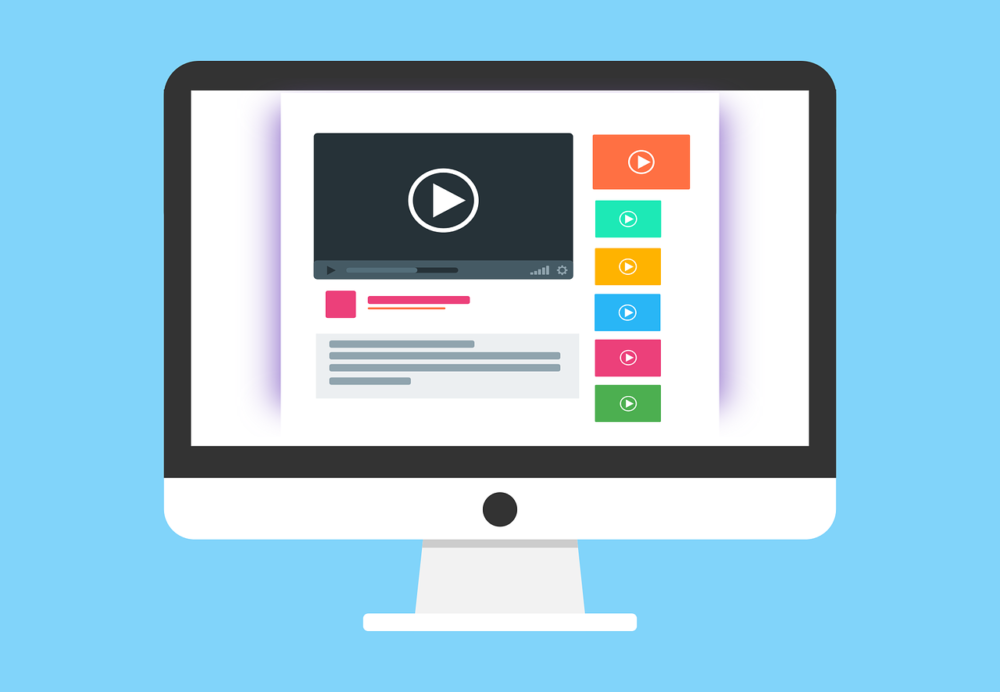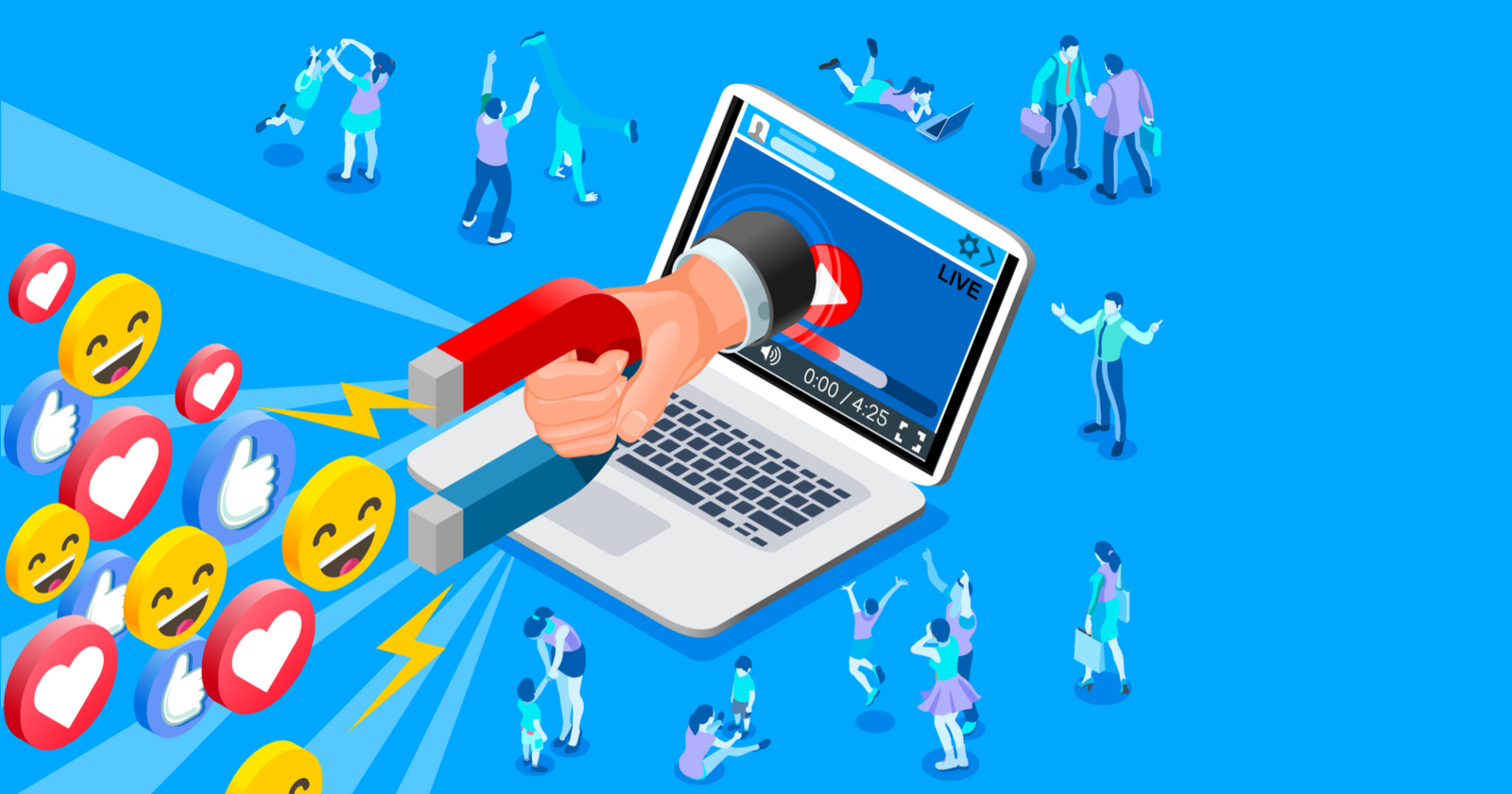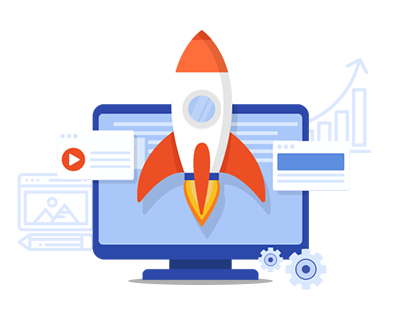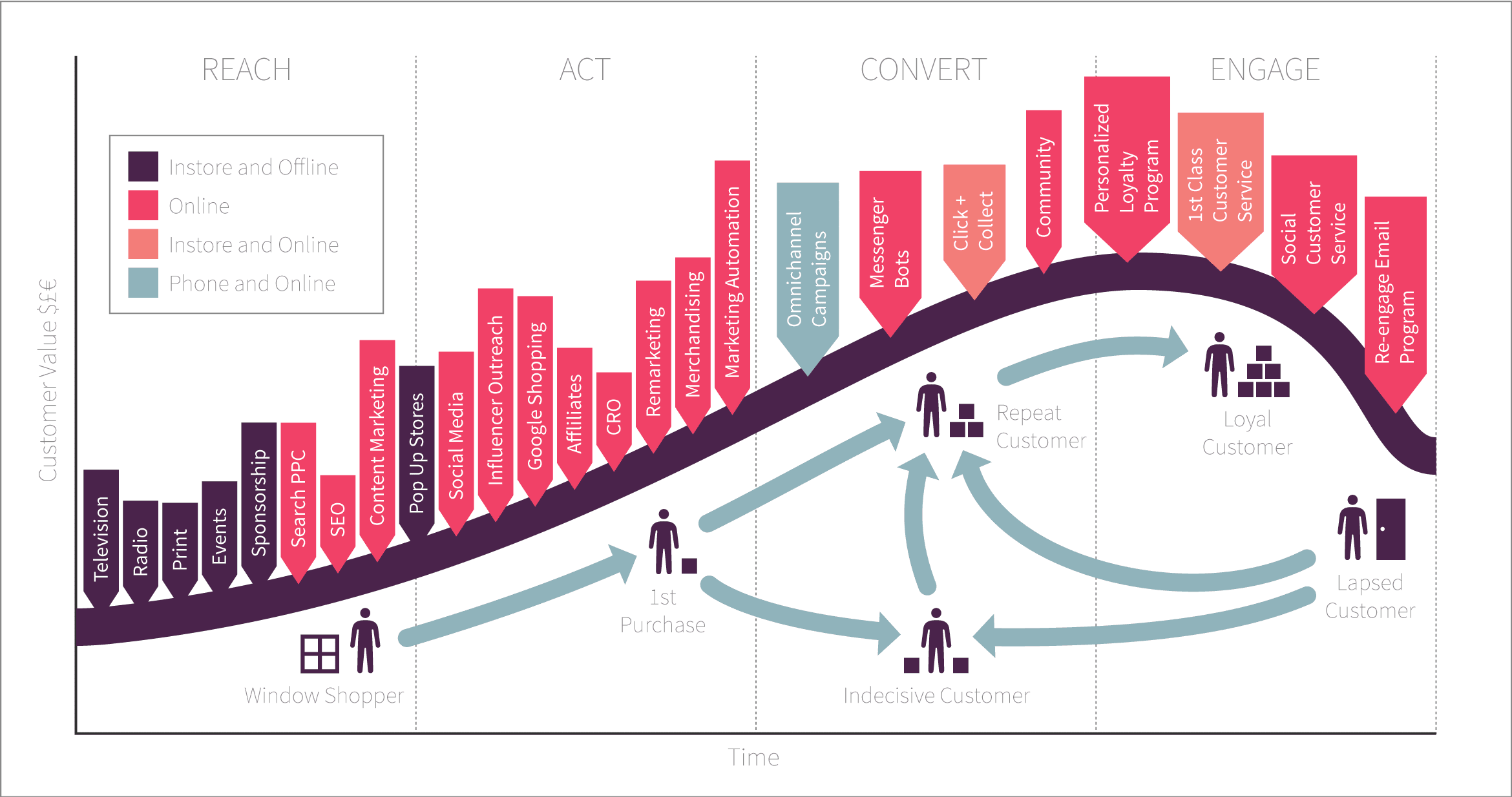Hello!
Connecting with customers and building lasting relationships is a challenge every business faces.
In fact, 78% of customers have abandoned a purchase due to a poor or substandard customer experience. Recognizing this issue, many companies are now turning to “lifecycle marketing” as a smart approach to nurture this relationship through every stage of a customer’s journey.
From the moment consumers first discover a brand to becoming its devoted supporters, lifecycle marketing is reshaping modern marketing by changing how businesses engage, retain, and grow.
But what exactly is lifecycle marketing, and why has it become so essential in today’s marketing ecosystem? In this comprehensive guide to lifecycle marketing, we’ll uncover its role in business growth and explore straightforward strategies that have made it a powerful tool for a wide range of companies.
What is lifecycle marketing?
 Lifecycle marketing is a marketing strategy that focuses on nurturing and building relationships with customers through various stages of their journey with a brand, from awareness to brand advocacy
Lifecycle marketing is a marketing strategy that focuses on nurturing and building relationships with customers through various stages of their journey with a brand, from awareness to brand advocacy
It involves tailoring marketing efforts and content to meet the specific needs and interests of customers at each stage of their interaction with the company. In simple terms, it’s about delivering the right message to the right people at the right time throughout their entire customer experience.
What is consumer lifecycle marketing?
Consumer lifecycle marketing is a strategic approach that revolves around understanding individual customer journeys. It involves tailoring marketing efforts to suit where each customer is in their journey, whether they are new prospects, active customers, or loyal advocates.
The goal of consumer lifecycle marketing is to build strong, long-lasting relationships with customers, and ultimately maximize their lifetime value to the business.
Also read: How Enhanced Security Can Boost Your Digital Marketing Strategies
What is the role of lifecycle marketing?
The role of lifecycle marketing is to strategically manage and optimize the entire customer journey, from initial awareness to post-purchase engagement and advocacy.
 The main objectives of lifecycle marketing include:
The main objectives of lifecycle marketing include:
- Lead Nurturing: For prospects in the early stages, lifecycle marketing focuses on nurturing leads through educational content and interactions to move them closer to making a purchase.
- Retention Strategies: Lifecycle marketing helps retain existing customers by providing ongoing value, personalized offers, and support to prevent churn.
- Customer Experience Enhancement: Lifecycle marketing aims to enhance the overall customer experience by ensuring that customers receive the right information and support at the right time.
- Data Analysis and Insights: Continuously monitoring and analyzing customer data throughout the lifecycle provides insights for refining marketing strategies and improving the overall customer experience.
- Revenue Growth: Ultimately, the role of lifecycle marketing is to drive revenue growth by increasing customer lifetime value, reducing customer acquisition costs, and maximizing the value of each customer relationship.
What are the stages of the customer lifecycle?
1. Awareness:
 The awareness stage is where potential customers first become aware of your brand, product, or service. It’s the initial step in the customer journey, and it’s crucial for building brand recognition and attracting a broad audience.
The awareness stage is where potential customers first become aware of your brand, product, or service. It’s the initial step in the customer journey, and it’s crucial for building brand recognition and attracting a broad audience.
For example, social media platforms like Instagram and Facebook allow businesses to run targeted ads to reach potential customers based on their interests and demographics, increasing brand awareness.
2. Acquisition:
In the acquisition stage, the goal is to turn aware prospects into actual customers.
This involves capturing leads and converting them into paying customers through various marketing tactics. For instance, Amazon offers an effective acquisition strategy with its Amazon Prime membership program. By offering free trials Amazon entices potential customers to join, thus converting them into paying subscribers.
3. Conversion
Conversion is when a prospect makes their first purchase or takes a significant action, such as signing up for a subscription. It’s a critical stage in the customer journey because it represents the moment when someone transitions from a lead to a customer.
For example, Spotify uses conversion tactics by offering a free tier with ads to attract users. Once users become familiar with the platform and its features, Spotify promotes its premium subscription, which offers an ad-free experience and offline listening.
4. Retention
 Retention involves keeping existing customers engaged and satisfied to ensure their continued loyalty. It is five times more cost-effective to retain customers than to acquire new ones, making this stage vital for long-term business success.
Retention involves keeping existing customers engaged and satisfied to ensure their continued loyalty. It is five times more cost-effective to retain customers than to acquire new ones, making this stage vital for long-term business success.
For example, Amazon Prime offers free shipping, streaming, and exclusive deals to retain customers. The convenience and added benefits encourage ongoing subscriptions.
5. Advocacy
Advocacy involves turning your loyal customers into brand advocates who actively promote your products or services to others. These advocates can significantly impact your brand’s reputation and growth.
For instance, Apple has a dedicated fan base that actively promotes the brand and its products, often influencing others to switch to Apple.
Lifecycle marketing strategies
Awareness and Acquisition Strategies:
Let’s start with the first two initial stages, “Awareness and Acquisition.” These stages are all about introducing your brand to potential customers, making them aware of your products or services, and ultimately, acquiring their interest and contact information. Strategies for these stages include:
Content Marketing:
- Blog Posts: Create high-quality blog content that addresses the pain points, questions, and interests of your target audience.
- Video Marketing: Produce engaging and informative videos that showcase your products or expertise. Share these videos on platforms like YouTube, your website, and social media to reach a wider audience.
- Infographics: Visual content is highly shareable and can quickly convey information. Infographics can help simplify complex ideas and attract social media shares, expanding your reach.
Social Media Advertising:
- Targeted Ads: Use social media platforms like Facebook, Instagram, and LinkedIn, to run highly targeted ad campaigns. These platforms allow you to define your audience based on demographics, interests, and behaviors.
- Retargeting: Implement retargeting ads to remind users who have interacted with your website or content about your brand. This keeps your brand top-of-mind and encourages them to revisit.
Lead Magnets and Gated Content:
- Ebooks and Whitepapers: Create in-depth, valuable resources that address common pain points or offer solutions to your target audience’s problems. These can be offered in exchange for contact information.
- Webinars and Workshops: Host online events, like interactive webinars or workshops, that provide valuable insights or training. Participants should register with their email addresses.
- Exclusive Access: Offer exclusive access to premium content, tools, or early product releases in exchange for contact information.
By implementing these strategies in the Awareness and Acquisition stage, you can effectively generate brand awareness, attract potential customers, and begin building a database of leads that can be nurtured through subsequent stages of the customer lifecycle.
Onboarding and Engagement Strategies:
The “Onboarding and Engagement” stages are a critical phase in the customer lifecycle. It’s the moment when a potential customer transitions into an actual customer, and their initial experience with your brand can significantly impact their long-term relationship with you.
The following strategies can be used for this stage:
Seamless Onboarding Process:
- Clear and Easy Onboarding: Ensure that the initial setup and onboarding process is as smooth, clear, and user-friendly as possible. Minimize any potential barriers that new users might encounter.
- Guided Walkthroughs: Offer step-by-step guided walkthroughs or tutorials within your product or service to help users get started quickly.
Personalized Onboarding Emails:
- Welcome Email Series: Create a series of personalized welcome emails that are triggered as soon as a user signs up or makes their first purchase.
- Relevant Content: Share helpful resources, such as how-to guides, video tutorials, or case studies, that match the user’s interests or the actions they’ve taken so far.
Welcome Offers:
- Discounts and Promotions: Offer first-time customers special discounts, promotions, or exclusive access to incentivize their initial purchase or engagement.
- Free Trials: If applicable, provide free trials for your product or service, allowing users to experience its value before committing to a paid subscription.
Conversion Strategy:
The “Conversion” stage is an important phase in the customer lifecycle, where engaged prospects transition into paying customers. It’s where you need to convince them that your product or service offers value worth their investment. Some strategies for this stage include:
Retargeting:
- Pixel-Based Retargeting: Implement pixel-based retargeting on your website to track users who have shown interest but haven’t converted. Use this data to display targeted ads to these users across various online platforms.
- Email Retargeting: Send personalized emails to those who have browsed your products or services but didn’t complete a purchase. Personalized emails are opened 82% more often compared to generic emails.
Persuasive Product Demonstrations:
- Webinars and Demos: Host webinars or live product demonstrations where you showcase the benefits and features of your product or service in action. Answer questions and address concerns in real-time.
- User-Generated Content: Share user-generated content, such as customer reviews, testimonials, or case studies, highlighting the positive experiences of previous customers.
Abandoned Cart Recovery:
- Automated Emails: Set up automated email sequences to recover abandoned shopping carts. Remind users of the items they left behind and offer incentives like discounts or free shipping to encourage them to complete their purchases.
- Personalized Recommendations: Suggest related or complementary products in the abandoned cart emails to potentially increase the order value.
Loyalty and Advocacy Lifecycle Strategy:
The “Loyalty and Advocacy” stage in the customer lifecycle is crucial because loyal customers not only purchase 33% more than new or occasional customers do, but also actively promote your brand, leading to increased customer acquisition. Here are specific strategies and tactics for this stage:
Referral Rewards:
- Referral Programs: Launch referral programs that incentivize existing customers to refer friends, family, or colleagues to your business. Offer rewards like discounts, free products, or cash incentives for successful referrals.
 User-Generated Content Campaigns:
User-Generated Content Campaigns:
- Social Media Contests: Run contests or challenges on social media platforms, encouraging customers to share photos or videos of themselves using your products. Use branded hashtags to track and showcase user-generated content.
- Customer Stories: Share customer success stories, testimonials, or case studies on your website and marketing materials.
Excellent Customer Support:
- Responsive Assistance: Provide exceptional customer support through various channels, ensuring that customer inquiries and issues are addressed promptly and effectively.
- Proactive Engagement: Proactively reach out to customers to gather feedback, offer assistance, and show that you genuinely care about their experience.
Examples of lifecycle marketing
Following is a list of prominent companies that have successfully implemented lifecycle marketing strategies:
NapoleonCat: Personal touch
 NapoleonCat is a social media management platform that puts a strong emphasis on personal communication with clients. While they build awareness and acquire leads through content marketing and paid campaigns, they make sure to personally talk to customers as soon as they sign up for a subscription.
NapoleonCat is a social media management platform that puts a strong emphasis on personal communication with clients. While they build awareness and acquire leads through content marketing and paid campaigns, they make sure to personally talk to customers as soon as they sign up for a subscription.
From onboarding and conversion to retention and advocacy — every customer gets to talk to a real person and receive timely support.
HubSpot: Marketing Automation
HubSpot, a marketing automation software provider, practices what it promotes by using its own platform to nurture leads and customers. HubSpot uses automated email workflows, content personalization, and lead scoring to convert and retain customers.
Netcore: Omnichannel Martech
Netcore is an omnichannel martech provider that enhances lifecycle marketing for its clients via automated communication across multiple touchpoints in the customer journey. It advocates using AMP emails to deliver rich, interactive messaging to nurture customers along their lifecycle.
Mirasee: Personalized Onboarding Emails
 Mirasee is an online education company that helps coaches launch and scale online course businesses. Though they utilize content marketing and joint venture promotion to acquire leads, prospects who sign up for their email list receive a personalized welcome sequence.
Mirasee is an online education company that helps coaches launch and scale online course businesses. Though they utilize content marketing and joint venture promotion to acquire leads, prospects who sign up for their email list receive a personalized welcome sequence.
In addition, those who purchase a subscription to Mirasee’s membership site receive personalized onboarding emails that help them navigate the site and make the most of their membership.
Benefits of the customer lifecycle marketing approach
Adopting a lifecycle marketing approach offers numerous benefits for businesses across various industries. Here are some of the key advantages:
Improved Customer Retention: Lifecycle marketing emphasizes nurturing and maintaining existing customer relationships. This leads to higher customer retention rates, reducing the need for constant acquisition efforts.
Enhanced Customer Experience: By tailoring marketing efforts to each stage of the customer journey, your business can provide more relevant and personalized interactions, resulting in a better overall customer experience.
 Increased Customer Loyalty: As customers progress through the lifecycle and receive targeted communication, they are more likely to develop brand loyalty, leading to repeat purchases and long-term commitment.
Increased Customer Loyalty: As customers progress through the lifecycle and receive targeted communication, they are more likely to develop brand loyalty, leading to repeat purchases and long-term commitment.
Better Data Usage: Analyzing data at each stage of the customer lifecycle provides valuable insights into customer behavior and preferences, enabling data-driven decision-making and marketing optimizations.
Effective Upselling and Cross-selling: Lifecycle marketing allows your business to identify opportunities for upselling and cross-selling additional products or services to existing customers who have already demonstrated interest or trust in the brand.
Measurable Results: Lifecycle marketing facilitates the tracking of key performance indicators (KPIs) at each stage, making it easier to measure the effectiveness of marketing efforts and make data-driven improvements.
What is lifecycle email marketing?
Lifecycle email marketing is a strategic approach to email marketing that involves sending targeted and personalized emails to subscribers at different stages of their customer journey or lifecycle with a brand.
 The goal of lifecycle email marketing is to nurture and engage subscribers, ultimately driving them towards specific actions or conversions, such as making a purchase, upgrading their subscription, or becoming loyal advocates.
The goal of lifecycle email marketing is to nurture and engage subscribers, ultimately driving them towards specific actions or conversions, such as making a purchase, upgrading their subscription, or becoming loyal advocates.
Below is the breakdown of key stages in a typical customer lifecycle and how email marketing is used in each stage:
Onboarding or Welcome Emails: These are the first emails sent to new subscribers or customers. They introduce the brand, set expectations, and provide valuable information or resources to help them get started.
Engagement or Nurture Emails: After the initial welcome series, ongoing emailsare sent to keep subscribers engaged and interested. These emails can include educational content, product recommendations, and other relevant information to maintain a connection.
Conversion or Promotional Emails: These emails are designed to encourage subscribers to take specific actions, such as making a purchase, signing up for a webinar, or downloading an ebook. They often include special offers, discounts, or promotions.
 Retention Emails: Sent to existing customers to encourage repeat purchases, upsells, or cross-sells. These emails may include loyalty rewards, product recommendations, or personalized content.
Retention Emails: Sent to existing customers to encourage repeat purchases, upsells, or cross-sells. These emails may include loyalty rewards, product recommendations, or personalized content.
Reactivation or Win-Back Emails: Sent to inactive subscribers or lostcustomers with the aim of re-engaging them. These emails can include special offers, reminders of the value of the brand, or incentives to return.
Advocacy or Referral Emails: Encourage satisfied customers to refer friends and family or become brand advocates. These emails can include referral programs, reviews, and testimonials.
 Post-Purchase or Feedback Emails: Sent after a customer makes a purchase to gather feedback, reviews, or testimonials. This information can help improve products and services and build trust with customers.
Post-Purchase or Feedback Emails: Sent after a customer makes a purchase to gather feedback, reviews, or testimonials. This information can help improve products and services and build trust with customers.
Abandonment Emails: Targeted at users who have abandoned their shopping carts or incomplete actions on the website. These emails aim to remind users of their interest and encourage them to complete the action.
In addition, to effectively implement lifecycle email marketing, make sure you segment the email lists based on customer behavior, preferences, and demographics.
Create compelling and relevant email content for each stage of your customer journey. You can also use automation tools that are often used to trigger emails based on user actions or time intervals, ensuring that the right message reaches the right person at the right time.
Lifecycle marketing best practices
To effectively implement lifecycle marketing, consider the following best practices:
Understand Your Customer Journey:
- Analyze and map out the various stages that customers typically go through, from awareness and consideration to purchase and loyalty.
- Identify key touchpoints and interactions customers have with your brand at each stage.
Segment Your Audience:
- Segment your customer base based on demographics, behavior, preferences, and purchase history. This allows you to send more personalized and relevant messages.
- Create buyer personas to better understand the motivations and pain points of different customer segments.
Data Collection and Analysis:
- Collect and analyze customer data to gain insights into their behavior, preferences, and needs.
- Use analytics tools to track website behavior, email engagement, and other relevant metrics to inform your marketing strategies.
Automation and Personalization:
- Use marketing automation tools to send timely and personalized messages. Automation helps ensure that the right message is delivered at the right time.
- Personalize email subject lines, content, and recommendations based on user behavior and preferences.
Multi-Channel Marketing:
- Reach customers through various channels such as email, social media, SMS, and retargeting ads. Ensure a consistent message and branding across all channels.
- Optimize your website for user experience and conversion at each stage of the customer journey.
A/B Testing:
- Continuously test different elements of your marketing campaigns, including email subject lines, content, visuals, and calls to action.
- Use A/B testing to refine your messaging and improve conversion rates.
 Measure and Iterate:
Measure and Iterate:
- Monitor the performance of your lifecycle marketing campaigns using key performance indicators (KPIs) like conversion rates, customer retention, and ROI.
- Use the data you collect to make informed adjustments to your strategies and campaigns.
By following these best practices, you can create a comprehensive and effective lifecycle marketing strategy that not only attracts new customers but also nurtures existing ones, ultimately driving growth, customer retention, and brand loyalty.
Also read:
- Definition Of Pilates Breathing And Yoga Along With Their Key Differences
- Four Lessons for a Successful Business
- Top 10 Essential Tools for Boosting Productivity in Flutter App Development
Conclusion:
 To sum it up, lifecycle marketing provides a strong solution to the challenges businesses face when connecting with and keeping customers. As we’ve discussed, weak customer relationships can lead to significant revenue losses, making lifecycle marketing strategies more important than ever.
To sum it up, lifecycle marketing provides a strong solution to the challenges businesses face when connecting with and keeping customers. As we’ve discussed, weak customer relationships can lead to significant revenue losses, making lifecycle marketing strategies more important than ever.
By matching marketing efforts with each part of a customer’s experience, you can greatly improve customer retention, enhance overall satisfaction, and increase revenue. From unengaged customers to loyal supporters, lifecycle marketing offers a flexible approach that’s changing the marketing state and will be even more important in the future.
As you continue your marketing efforts, think about the strategies and best practices we’ve talked about in this guide to make the most of lifecycle marketing and achieve long-lasting success for your business.
Thank you!
Join us on social media!
See you!






